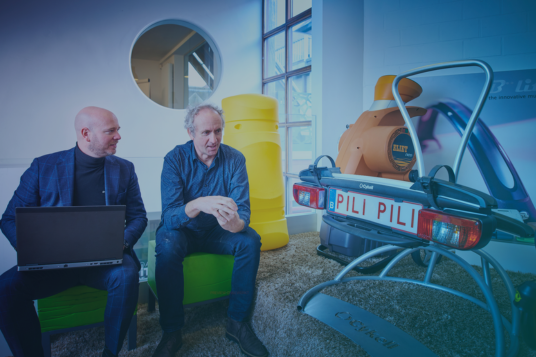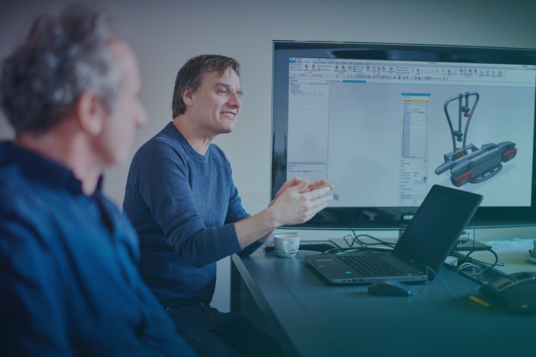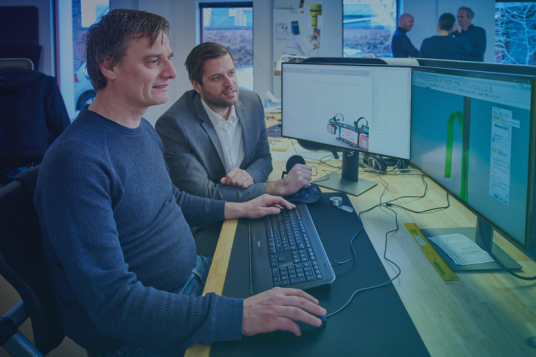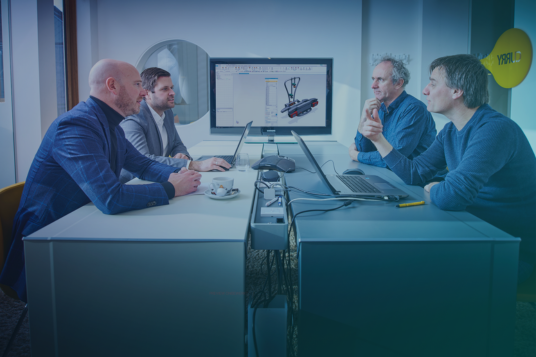Business Challenges
- Industrial design origin
- Software bottlenecks
- More precision-focused software required
Keys to Success
- Siemens NX™ for precision and free-form design
- Use of adaptable softwares
- Siemens NX™ for urgent projects
Results
- Achieved complex designs
- Shorter lead times
- Streamlined processes
Case study Pilipilli
The team at their creative Kortrijk office doesn't just execute client requests; they elevate them. With 14 skilled industrial designers and engineers, they're constantly innovating for the Belgian market. They offer a comprehensive development process - from analysis and conceptual design to engineering, prototyping, and testing. Moreover, they also manage production and assist with market entry. Their expertise covers a range of markets, including consumer goods, industrial installations, and medical and electronic applications, setting them apart from other agencies in breadth and capability.


Business Challenges
Pilipili, born from the innovative minds of two Industrial Design classmates at Antwerp University College, has a rich history. Co-founder Steven Dehollander was a pioneer in digital design, being one of the first students to draw on a computer. His fascination with the connection between drawing and technology blossomed at an electronics fair.
Pilipili leveraged various CAD packages in its early years, maximising its capabilities. Our collaboration sparked two decades ago when software limitations became a critical hurdle. Steven vividly recalls a defining moment: designing an organic-style onboard computer for a truck. A simple adjustment in the CAD program, increasing a blend radius from one to two, took six hours due to safety regulations. This challenge led Pilipili to conduct a benchmark, inviting multiple companies to participate.
The test? Using the onboard computer design. While other companies sought a preview to prepare, Siemens NX™ (formerly Unigraphics) tackled the surface and blend update live and unprepared. This impressive demonstration was a turning point, clearly indicating Siemens NX™ as the partner Pilipili wanted to align with.
Keys to Success
Several factors influenced Pilipili's decision to adopt Siemens NX™. Firstly, its predecessor was popular among major clients, making it a commercially strategic choice. Pilipili sought to elevate its capabilities, particularly in free-form design and surface modelling. The software's proficiency in parametric design was also critical, given the need to produce three distinct types of files for clients: product drawings, manufacturing process drawings, and assembly drawings.
Pilipili's work often involves accommodating changes such as material shrinkage during injection moulding, necessitating different dimensions for the mould maker than the product drawing. Even the assembly method might subtly alter a product's dimensions. Changes are a routine part of product development, and Siemens NX™'s ability to analyse and adapt to these changes was a key consideration.
Moreover, time is a critical factor for a design bureau like Pilipili. Clients frequently demand rapid development, often for upcoming exhibitions, necessitating robust and reliable software that performs under pressure. The transition to Siemens NX™ was a strategic move to replace outdated CAD software, ensuring Pilipili stayed ahead in the industry with the right combination of skilled personnel, quality materials, and advanced software.
Few bureaus can match Pilipili's level of expertise and advanced use of NX™. The partnership with Emixa Industry Solutions and Siemens developers further strengthens this capability. Implementing the Siemens PCB exchange module has also been a game-changer, seamlessly integrating design, mechanics, and electronics. This module enhances collaboration, allowing for efficient tracking and dissection of the design and manufacturing process, a testament to Pilipili's commitment to leading-edge technology and collaboration in complex project challenges.


Results
The ability to accomplish complex designs goes hand in hand with the efficiency derived from swift adaptation processing. This leads to shorter lead times enabled by reliable software.
Related Cases
%2015%25-4.png)
Revolutionizing Precision Machining with NX™ Software
YouniQ Machining, a pioneering startup leveraging Siemens NX™, has revolutionized precision machining by minimizing human intervention, slashing lead times to two days, and achieving an 80% automation rate, transforming the industry's norms.
%2015%25-5.png)
Elevating Automotive Mould Adaptation with NX™ Integration
Surtechno revolutionized European automotive manufacturing by specializing in mould modifications, leveraging NX CAD/CAM integration for real-time design adjustments, swift testing, and superior quality control, reducing time-to-market and securing a vast client base among leading suppliers.
